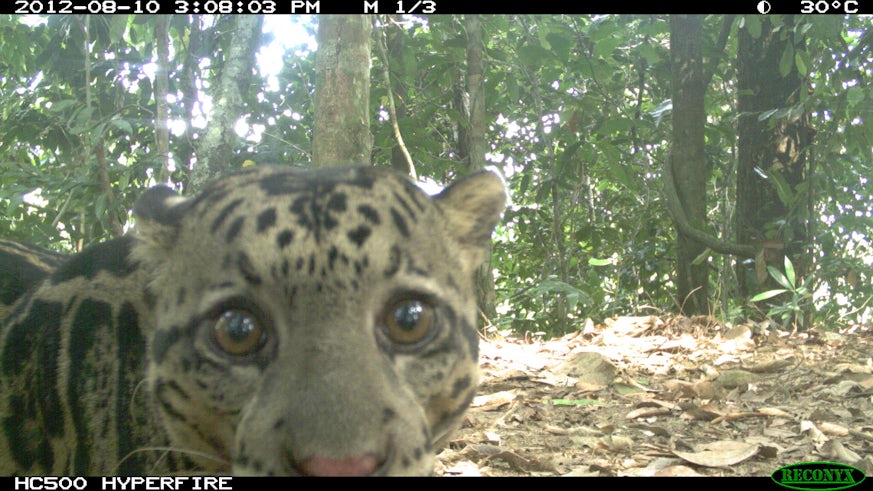Less than 800 Sunda clouded leopards in Sabah
2 November 2017

A recent study published in the scientific journal Oryx has produced the first robust estimate of the number of Sunda clouded leopards remaining in the Bornean state of Sabah, Malaysian Borneo, and explored how changes to Sabah’s forest landscape may be affecting these threatened wild cats.
The study, led by researchers from WildCRU (University of Oxford, UK), in collaboration with partners from the Universiti Malaysia Sabah, Panthera and Danau Girang Field Centre, a collaborative research and training facility managed by Sabah Wildlife Department and Cardiff University, provided the first evidence that the population density of the Sunda clouded leopard is negatively affected by hunting pressure and forest fragmentation. They also showed that time since logging among selectively logged forests is positively associated with abundance. This research was primarily funded by the Darwin Initiative, the Recanati-Kaplan Foundation, the Robertson Foundation and the Sime Darby Foundation.
“For six years, we conducted intensive camera-trap surveys of eight protected areas in Sabah,” said Dr Andrew Hearn from WildCRU, first author of the paper. “We used the cloud shaped markings on the coat of the animal and morphology to identify and sex individual animals and used sophisticated statistical methods to estimate their density in these different forest areas across Sabah. We also analysed our camera trap data to provide an estimate of poaching pressure for each study area,” added Hearn. “We found evidence of poaching activity in all forest areas with the lowest detection rates being in Danum and the highest in Kinabatangan. We finally estimated the size of the population of the Sunda clouded leopard to be around 750 individuals in Sabah,” concluded Hearn.

Professor David Macdonald, Director of the WildCRU at Oxford said “Clouded leopards are stunningly beautiful, and as denizens of some of the most threatened forests in the world they have the potential to be iconic symbols for conservation: our findings are a big step on that road”.
Luke Hunter, the President and Chief Conservation Officer of Panthera said “The clouded leopard is the top cat of Sabah, playing a similar role as tigers or leopards in continental Asia. Sadly, just as for tigers and leopards elsewhere, clouded leopards are targeted by poachers. Our work emphasizes yet again how saving big cats and their prey relies on strong protection and robust anti-poaching measures”.
DGFC director Dr Benoit Goossens, a co-author on the study, said he hopes that the results of this paper together with the action plan for the Sunda clouded leopard that is currently being drafted and should be launched early 2018, will help managing the species in Sabah’s forests. “The fact that selectively logged forests provide an important resource for Sunda clouded leopards suggest that appropriate management of these commercial forests could further enhance their conservation value,” added Goossens. “But the overriding priority for our wildlife managers is to reduce poaching pressure, both on these felids and their prey, by reducing access to the forest interior along logging roads and by increasing enforcement patrols at strategic areas,” concluded Goossens.
